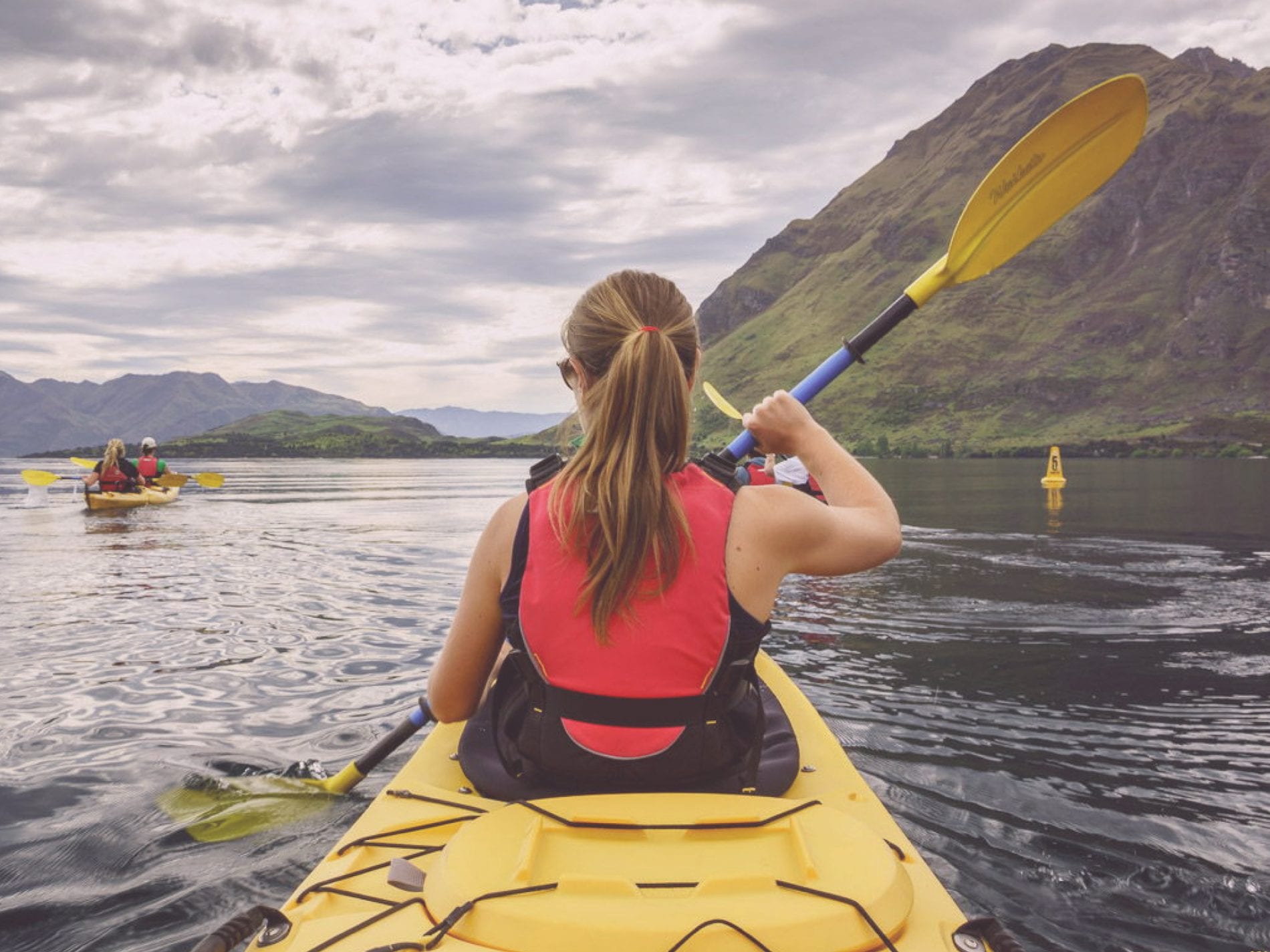The Himalayan mountain range is one of the most unusual environments regularly braved by adventurers and tourists. This inhospitable area is home to dozens of peaks exceeding 7200m (or almost 24000 ft) spaced across five countries: India, China, Pakistan, Nepal, and Bhutan.
But what captivates the imagination of so many is Mount Everest itself. With a height of 8848m (or over 29000 ft), it is the highest mountain peak on the entire planet. To try to climb it, you must first get to the base of the mountain, meaning that you need to join an Everest Base Camp Trek and stop at either of the Everest base camps before you proceed further. Getting to these two campsites may be straightforward for experienced trekkers, but quite a challenge for everyone else.
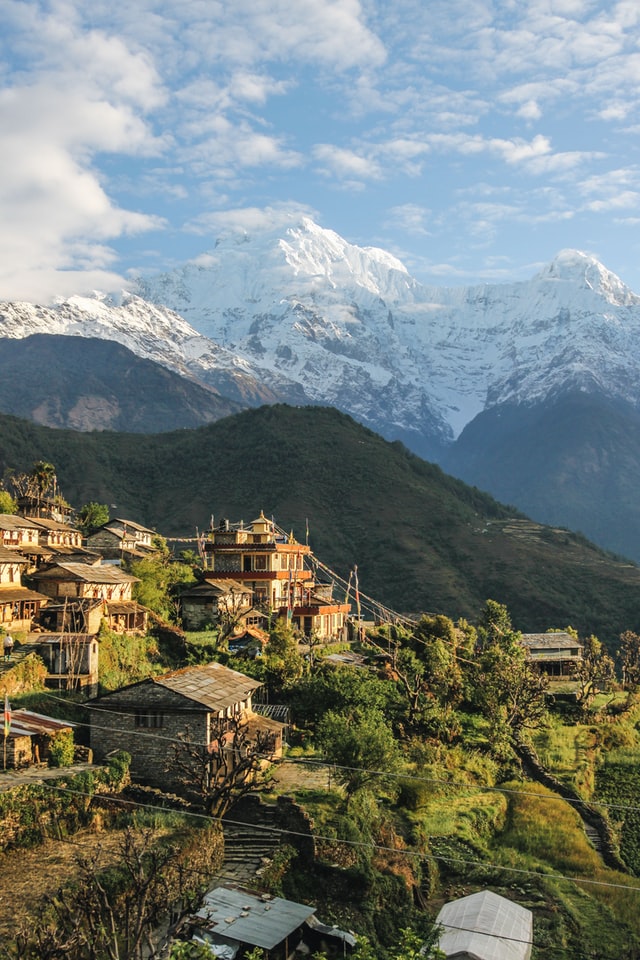
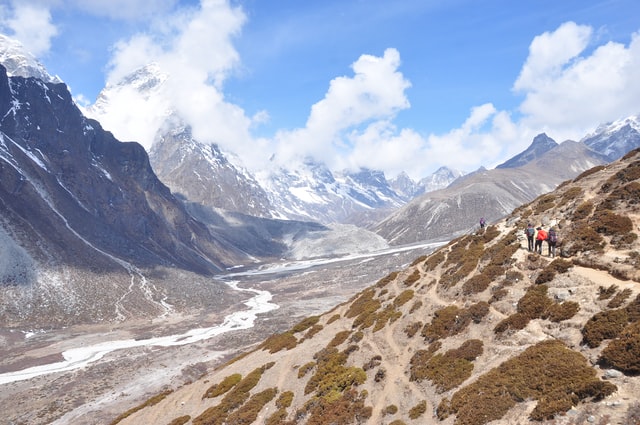
Is Everest Base Camp a walk in the park?
Trekking to Everest Base Camp is not exactly your run of the mill weekend camping trip. Even if you have the best UK life insurance, you should also get travel insurance – the risk of things going awry is always there, no matter your level of experience. The round trip takes many days and is often done at an elevation of over 4000m (or over 13000 ft). Because of this, we’ve prepared a number of useful tips that you should take into consideration when planning a trip there.
Plan your gear based on your route and expereince
Himalayan mountains are some of the most intense environments on the planet. It means that if you choose them as your destination, you’ll be at the whim of the unpredictable weather, with falls and injuries not being a distant possibility if you are not careful.
Never cut corners on your climbing gear
If you plan to climb Mount Everest proper once you reach one of the EBCs, it’s vital that you never cheap out on climbing gear. That means your equipment like ice picks, carabiners, harness, and especially the ropes you will use all have to be of top quality to ensure every bit of safety you can get. Having a tool break mid-climb because it wasn’t good enough or rated for the typical conditions at the peak is not something you want to experience.
Trekking to EBC doesn’t require extreme weather equipment
The above, however, doesn’t necessarily apply if you only plan to do the trekking part. Sure it can be cold and hard while getting to the Everest base camp, but the issues and extremes you might experience on your trip there are not going to be nearly as dangerous. That means you can make some compromises.
You might want to get warm and sturdy clothing or backpacks beforehand using the Internet. Purchase the necessary things taking into account various sales and discounts (e.g., by using Myntra Deals). This way, you can still get good quality apparel without going bankrupt.
Alternatively, it might be a good idea to buy what you need locally. To illustrate the point, Kathmandu, Nepal, is famous for its large number of trekking shops. Because the competition in this field is so fierce, the prices you might find there are very reasonable. Equipment of both internationally renowned brands like NorthFace and cheap fakes are available for less than their equivalents in other countries.
Travel light
When planning your Everest base camp trip, remember to be rather strict with the number of non-necessities you bring. The Nepal-based trip, for example, requires you to take a flight from Kathmandu to Lukla, where you will begin your journey to the south Everest base camp. The weight limits here are pretty strict – 15kg (equivalent to around 33 lbs) of luggage total, with 5kg of it being the carry-on type. That doesn’t sound like a lot, but remember that you’re going to be trekking in a pretty challenging environment, so hauling even those “lightweight” baggage might not be as easy or convenient as you think.
This issue is not so pronounced when you decide to go on a north Everest base camp trip from Tibet. This campsite has a paved road leading to it (with a total length of a few hundred miles), meaning that you can get there by driving a car. The one in Nepal, on the other hand, can’t be accessed by vehicles.
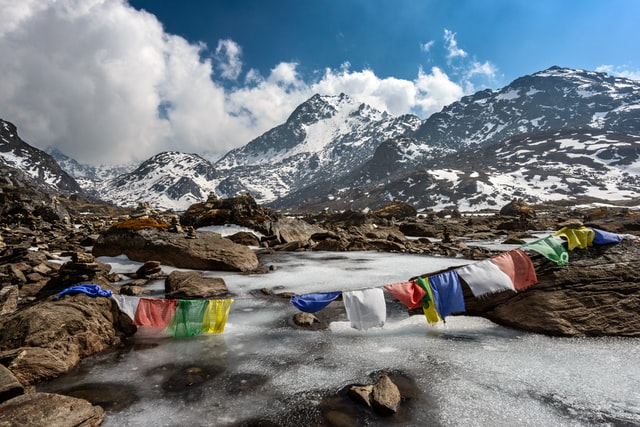
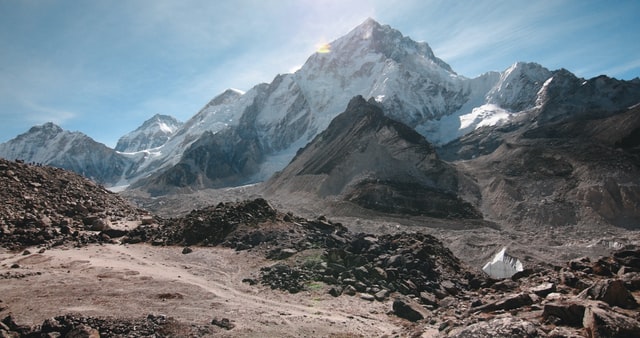
Food and water rations are esssential for EBC treks
Although the local food is going to be readily available in the local establishments (called tea houses), it’s perfectly normal that you might want to grab a bite when far away from the nearest food place. For this purpose, it might be a good idea to plan the sort of snacks you will bring with you. Regardless of where you get them from, your best bet is most likely…
pack high protein trail bars and chocolate
There is a reason why many emergency food rations around the world contain protein and sugar. These snacks are not only delicious to eat, but also very nutritious. It’s no secret that Everest base camp trips can be very demanding in terms of physical exertion, meaning that you will burn a lot of calories. Being able to provide almost 600 calories from a small portion of 100g might be just what you need to keep going. Moreover, because of how compact chocolate is, you can carry more of it than other snacks with equivalent caloric content.
Make sure you have a way of filtering water
While you decide on your Everest base camp trip plan, you should never forget about water. Unfortunately, getting it is not as convenient as in highly urbanized areas.
First of all, bottled water is not as clear of a choice as you might think. As of January 2020, it is now impossible to both bring single-use plastic water bottles and buy them locally in the Khumbu region, near Mount Everest. Although it is a great initiative to reduce the number of trash hikers and trekkers leave behind them, it also means that you must either rely on refilling boiled or tap water found in lodges or know how to get it from nature.
If you don’t have access to boiled water, it’s crucial that you bring with you something that allows you to purify the water. That means you should plan on taking either water purification tablets or a SteriPEN to ensure that it’s safe to drink. The first choice is lighter and not dependent on power, while the latter is much faster in ensuring your H2O is safe to drink. The choice is ultimately yours.
Plan for periods of inactivity
As exciting as EBC trips are, they still often take almost 2 weeks to finish. The views are stunning and the experience otherworldly, but you should always have something to relax with. In normal circumstances, electronic devices like laptops, portable game consoles, or tablets would serve this purpose, but remember that the Himalayan region is far from what most would call “usual”.
Even in 2022, electricity and the internet are both scarce and expensive there, meaning that you should choose some traditional methods of handling boredom like playing cards. Alternatively, if you like drawing, taking a sketchbook and a pencil might be a great idea to relax, test your skills and create some outstanding souvenirs while on the trail. A book might be a good idea, but try to get a softcover edition – hardcover looks nice but results in an unnecessary weight increase.
Don’t forget about medications and first aid supplies
It’s always good to be a responsible person and follow the old adage “better safe than sorry” when going on a potentially dangerous trip. That means planning to bring along various sorts of medicine.
You should always take a first aid kit with you. One never knows when a treacherous stone may turn out to be loose and result in a nasty cut. Having the means to properly disinfect and dress the wound might mean the difference between being able to continue your trek or having to return to a hospital.
Moreover, certain gastrointestinal conditions like diarrhoea are not only common but quite dangerous during mountain treks. Inconvenience resulting from the lack of proper toilets is the least of your worries. Diarrhoea can disturb your mineral balance and seriously dehydrate your body, so be sure to have some antibiotics and loperamide-based medications like Imodium to minimize its effects.
Planning an Everest base camp trip is a complex procedure that involves quite a bit of work and research, especially in terms of necessities like equipment, medications, or provisions. However, once you have the proper knowledge about what is vital and worth taking care of beforehand, your 2022 trip will become much safer and more enjoyable. Good luck on your trekking adventure. May the good weather be with you!


